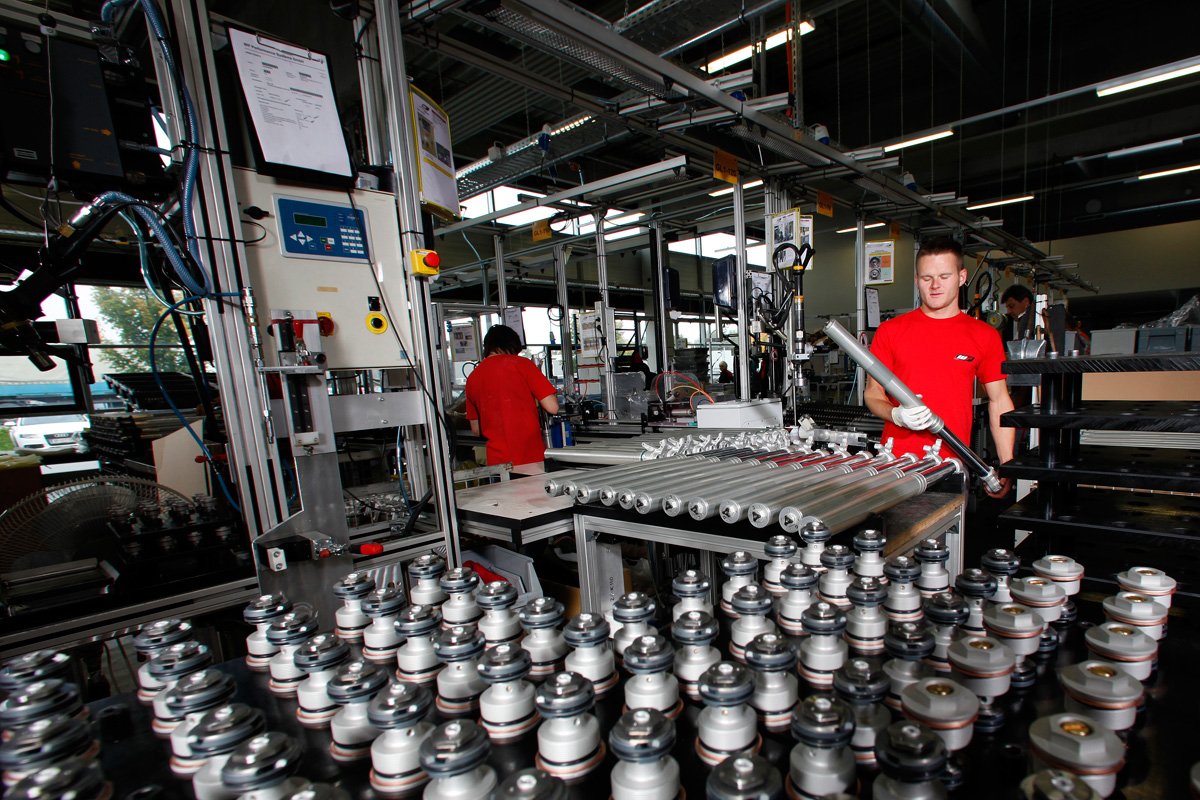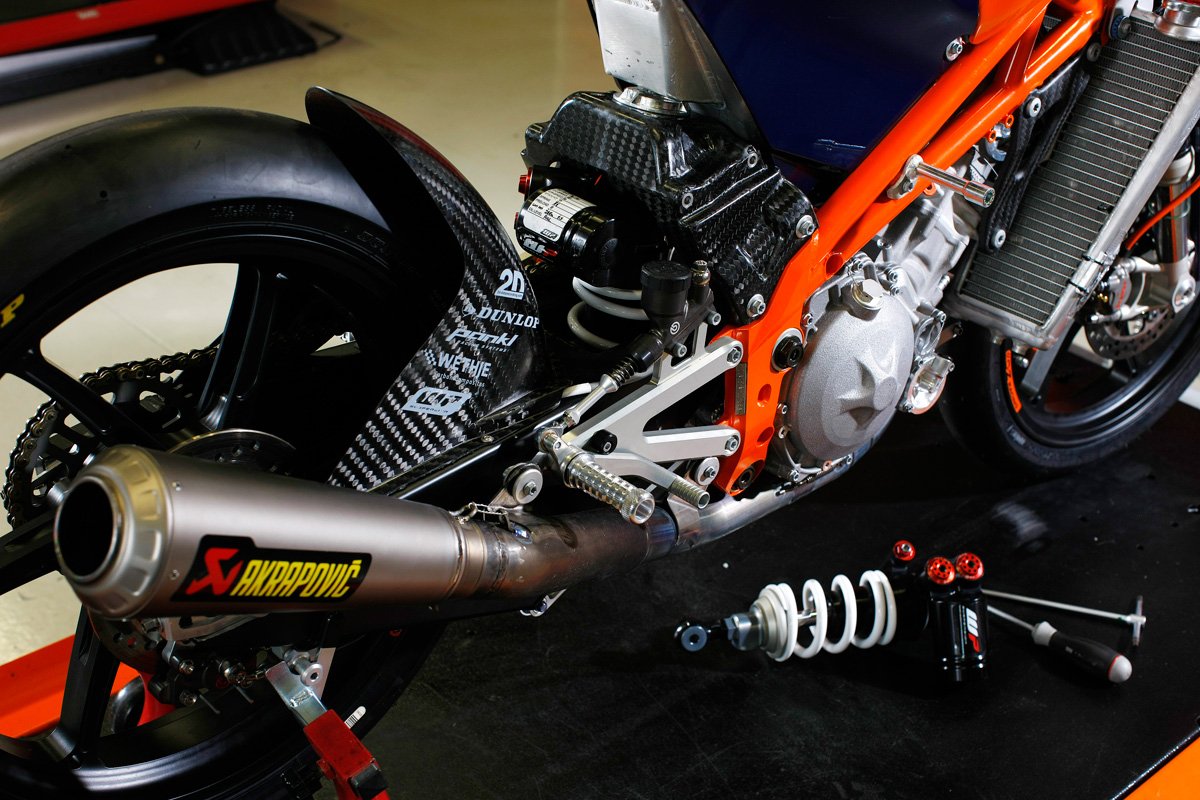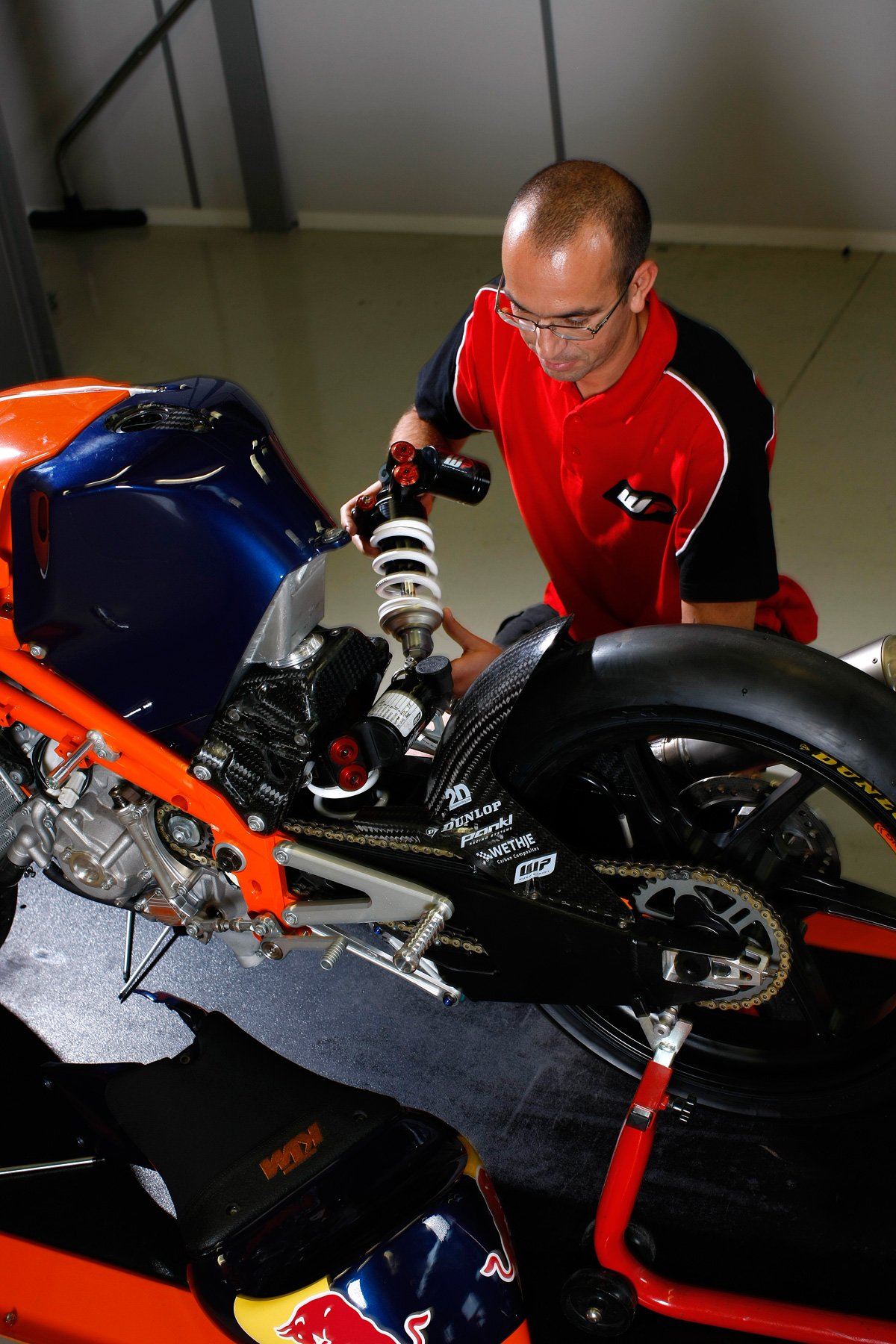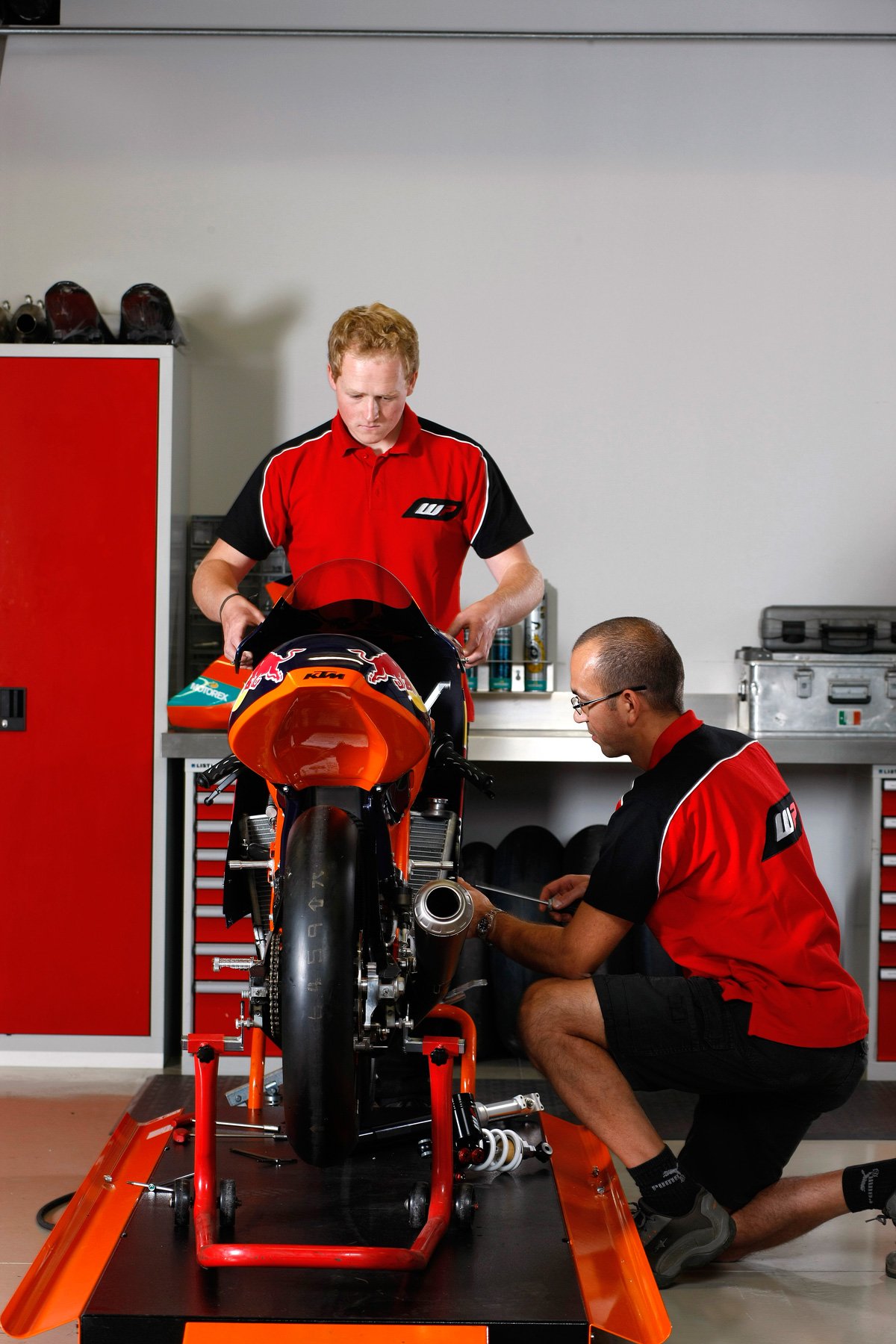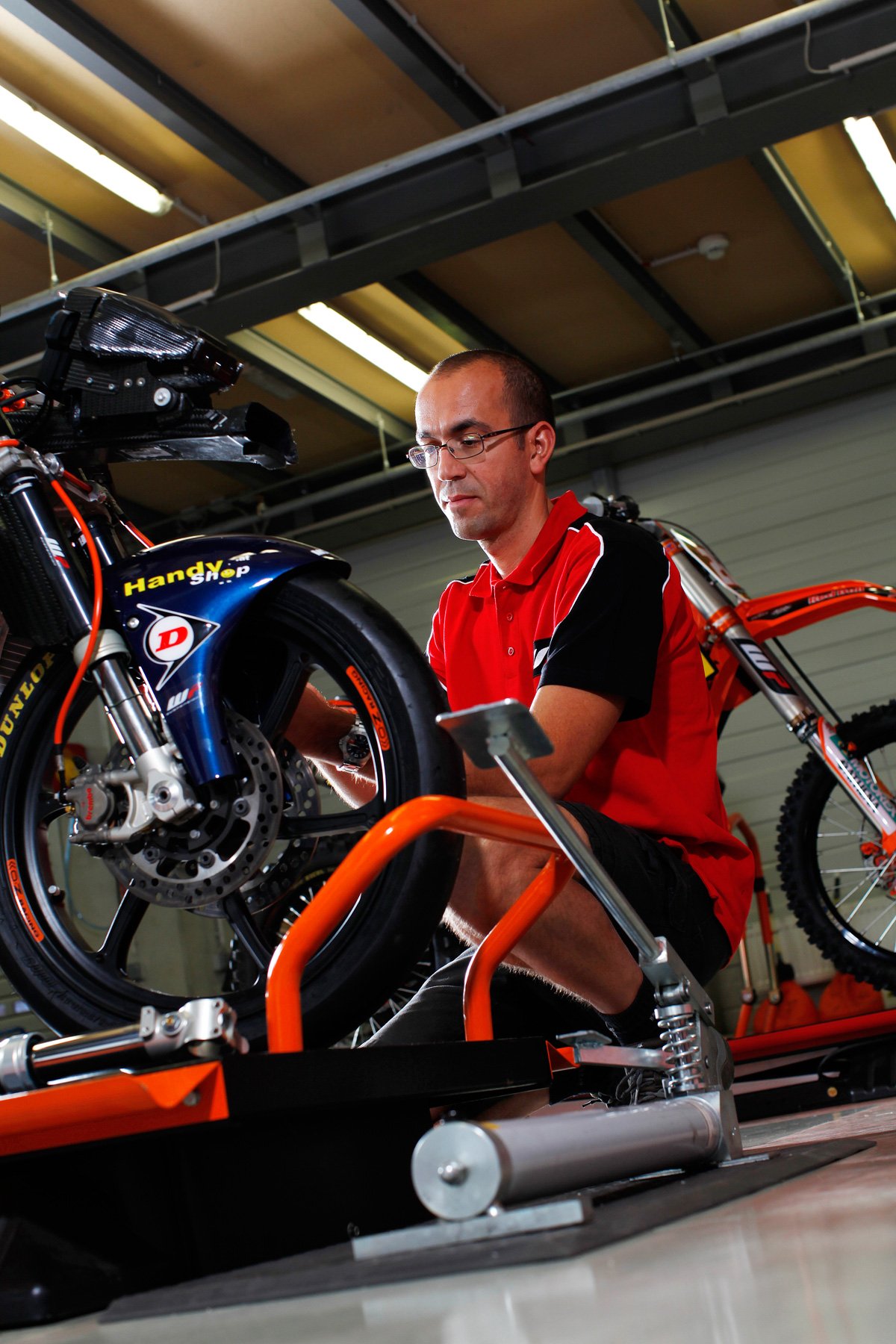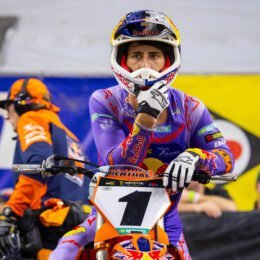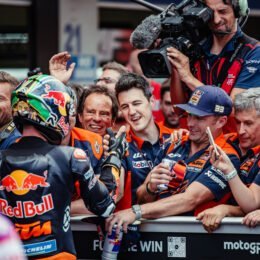Riding the bumps: How WP helped make Moto3 history
2012 will be a racing year that will reverberate long in the halls of Mattighofen … for being the season when KTM swapped knobbly tyres for slicks and made a powerful statement in the Moto3 category.

WP and Moto3 photo courtesy of Archer/WP
Successive podiums, Sandro, Ajo, victories, landmarks, Malaysia and glory: the ’12 story is well known by now but there are other elements to the tale that deserve recognition. The 250 GPR was a new project not only for the Austrians but also for some key partners, chief among those were WP Performance Systems who can look back on the last ten-eleven months as an emphatic return to the road racing scene in which the suspension specialists were formerly very prominent. We grabbed ten minutes with WP’s Racing R&D Manager Jurgen Peko to ask how the firm – based in Munderfing, only five minutes from KTM and are closely allied to the factory and their comprehensive range of bikes on road and off – tackled their triumphant first term in MotoGP.
KTM. Moto3. New bike. 2012 was quite some undertaking …
“Yes and for sure we had to make a big guess because the Moto3 bike was brand new and nobody had experience of this four-stroke engine on the track. We took a direction based from what we knew of the 125 machine. We drew the characteristics from this bike and took into account the extra weight of the four-stroke, the different braking behaviour and made some calculations. I feel quite proud to say that we found the right direction for the stiffness of the fork and the set-up. The others like FTR and Honda I imagine also took their base from the 125 so everyone was stepping into the unknown.”
Did WP’s work evolve enormously throughout the season?
“For sure during the year there are a lot of small steps but if you take the difference from the first roll-out unit to the finished product there is a huge step. I would say the potential of the fork now is really high and this is where we wanted it to be.”
What were those steps? Were they to do with components or modifications?
“Everything. For sure the settings are different but also the components with the compression and the stroke. The bikes are pitching different to the 125 and the changes were essential. It was good on our side because we only had a few riders in Moto3, so if we wanted to change the length of the fork and try a new model then we only had to produce a few. If we had the half the paddock in the first year then it would have been harder and it would have been better to find an argument to keep an original fork length or component! Moto3 meant everything was new – for everybody – so there could not have been a better time to step in. After the first tests we were still able to make some modifications and go in the direction we want.”
For an offroad fork you can go out in any weather condition, on any day and across any terrain but for road racing there must be more restrictions with track access and time with people like Cortese …
“Absolutely. We have development programs and racing development programs for offroad and we had to change our way of working for Moto3. In motocross for example it is quite easy to take a good rider and go across a range of surfaces and get good feedback. The Moto3 work was more in-house with simulations and dyno tests before getting to the track. I don’t want to say that our offroad guys are not prepared for the track but they are really good at reacting to the terrain and to the feedback of the rider. There is less time on the asphalt, so the level of preparation when the bike pulls out of the pit has to be right up there. There are only a few sessions … then you have to evaluate.”
With sensors, electronics and telemetry for road racing just how important is the rider for the setting? Is it around 70% human input to find the right solution?
“I would say with 70% you are close to the mark. We had a great opportunity to work with KTM’s test team but – putting everything together – the ‘red line’ does not vary wildly between different riders. Each racer has their own style and specific setting but our development direction went through the test team to the race team and there were only small differences; such as when they want more support, to brake later into the corner or carry more speed in the turn. For me personally that was really interesting to see. I think it means we had a good product that was working effectively for everybody and with little changes we made something special for each person.”
Is the Moto3 and MotoGP paddock and environment quite a big thing to deal with in terms of the pressure, high level of competition and visibility? It must be a different world and different prospect compared to something like motocross for example where you are already well-established and you know your competitors …
“I think we were really lucky to be able to dip into a new category with new machinery and it was a fantastic opportunity. I believe the next two years will be hard because other people will step up and make us a target. We had internal pressure in 2012 because KTM were in a position where they were looking at those 125 and 250c world titles a few years ago but for some bad luck it didn’t happen and we knew we had a good shot this season. Externally however nobody was really looking at us come the first race and that is different now.”
You have to be happy with the results …
“We cannot have any complaints! Honda are a really big player and I think they were riding their Moto3 bike two years ago in the Japanese championship. Going against someone like that gave us a lot of motivation to be focussed.”
From your R&D work and knowledge is there still much territory and development to be made with motorcycle suspension?
“I think there is a lot to be discovered but not much that can be truly innovated. For sure air suspension is on everybody’s mind but if you think twenty or thirty years ago there were also people pumping up their forks! Development tends to circle around but the advance of technology means you can start again and find a high potential that was not possible decades before. For example the air suspension is very interesting but the behaviour of an air spring is very different to a steel spring. Everyone knew that but nobody knew in which way. With our dyno facility now we really have a chance to see what is happening to the air system and the dynamic behaviour of the whole unit. There is a lot of investigation to be done and questions to be asked. We have gained the knowledge and now we have to bring it into the product.”


